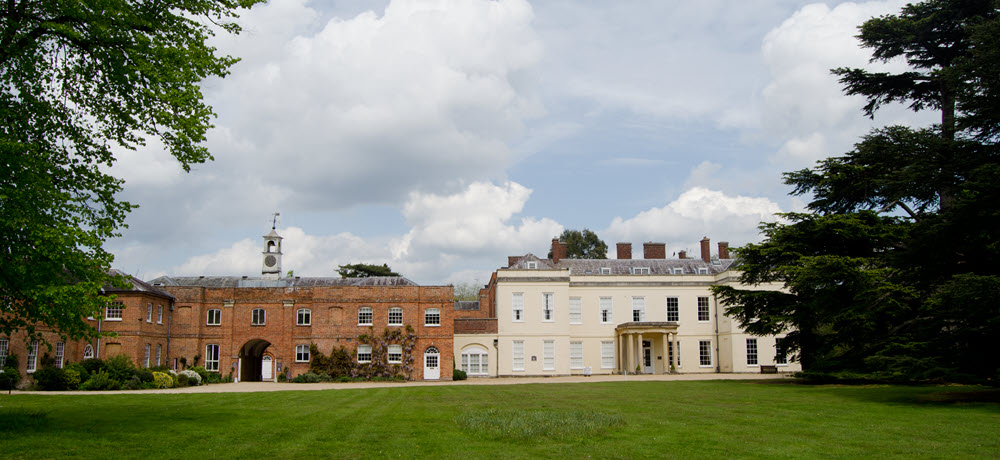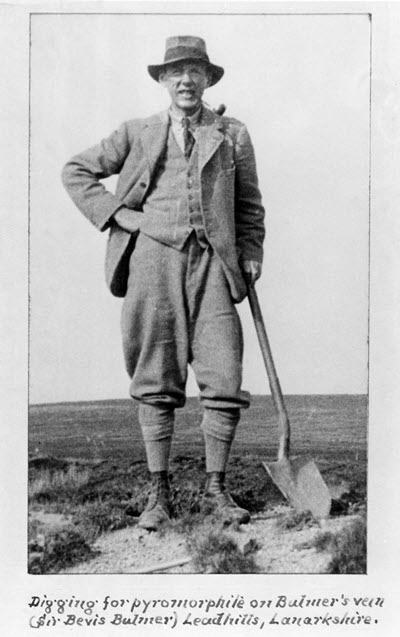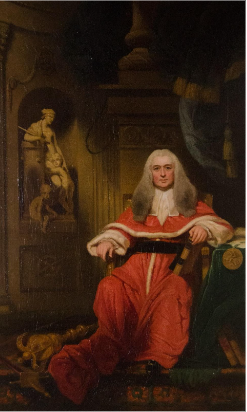

Swallowfield Park today is an exclusive private estate with beautifully maintained grounds and a large stately home converted into luxury apartments.However it is better known as the home of Sir Arthur Russell (1878–1964) one of the most famous mineral collectors in the world whose fine collection was bequeathed to the Natural History Museum (London) in 1964.
The honorific ‘Sir’ is not a knighthood for public service but the result of him becoming the 6th Baronet Russell of Swallowfield in Berkshire, a hereditary title created for his great-grandfather Sir Henry Russell (1751–1836). One might be forgiven for imagining that his family background would have bestowed upon him a comfortable lifestyle, but the reality was rather different. By the time that he inherited the title as 6th Baronet and owner of Swallowfield in 1944, most of the family wealth had gone.
He was by nature a frugal person with the common touch, equally at home with miners and quarrymen as he was with the mine owners and landowners that paid their wages. His personal and family life, through three marriages, was a complex mixture of happiness and disappointment, of hard physical work and academic study, underpinned and sustained throughout by his love of nature, of birds, trees and animals, and above all minerals.
His family origins can be traced to Thomas Russell (d. 1688) who served as Town Clerk of Dover from 1683 until his death but for the purposes of this short article the story really starts with Henry Russell (I) who was born at Maison Dieu House, Dover in 1751. He had been admitted to Lincoln’s Inn, London, in June 1768 to train as a lawyer and when aged only about 24, he was appointed a Commissioner of Bankruptcy by the Lord Chancellor, tremendous good fortune for a young man starting out in life.
Henry (I) married Anne Skinner on 1 August 1776, but tragically she died during childbirth in 1780 and was buried with her infant son Henry (who died a short while later in 1781), at Lydd, Kent, where there is a beautiful monument to her memory.
Only a couple of years later, in July 1782, Henry (I) married again. His second wife, Anne Barbara (d. 1814), was the fifth daughter of Sir Charles Whitworth. Henry (I) was called to the Bar in July 1783 and building upon his undoubted success and reputation as a barrister was knighted in May 1797, and appointed a puisne judge in the Bengal Supreme Court in India.
In September of that year Henry (I) set out on a gruelling voyage to India to take up his post, arriving in Bengal in May 1798. Anne and the younger Russell children remained in England, but after giving birth to her eighth child in December 1797, she too set sail for Bengal, leaving her young family behind.
The Russells, once reunited in Calcutta (present-day Kolkata), soon became well-established in the thriving commercial and political community. However, early in 1804 Lady Russell’s health was deteriorating and her doctor advised that she should return home before the hot season. Once back in England, Lady Russell spent her time travelling around the country with her younger children whilst awaiting her husband’s return.

Henry (I) was appointed Chief Justice of the Supreme Court of Bengal in 1807 and created a baronet in December 1812. In March 1813 he wrote to his wife stating that he planned to combine his wealth with that of his sons to purchase an estate in England. It was envisaged that Sir Henry (I) would contribute £100,000, his son Henry (II) £60,000 and Charles £40,000, making a total fund of £200,000 and they proposed to divide any rental income proportionately.
In November 1813, after fifteen years’ service in India, Sir Henry Russell (I) resigned as Chief Justice and returned to England, but sadly he was only reunited with his wife for a short time as tragically she died in August 1814. Upon his death in January 1836, aged 84, Sir Henry (I) was buried in the newly built annexe to the Church at Swallowfield with his wife Anne, whose body was retrieved from Sevenoaks where she had been interred.
He was succeeded by his eldest son, Henry (II) (Arthur Russell’s grandfather) who had travelled with his father to India when only fourteen years of age. By the time that he was sixteen, his hard work, intellect and language skills had earned him considerable recognition and in 1800 Lord Mornington despatched him to Hyderabad as assistant-secretary to the Resident at the Court of his Highness the Nizam.
Henry (II) married his first wife Jane Amelia Casamajor (1789–1808) in October 1808 but sadly she died only two months after the marriage and a distraught Henry (II) returned to England where he remained for about a year.
Lord Mornington appointed Henry (II) ‘Resident at Hyderabad’ and he returned to India in 1810 at the age of 27, to take up the post. This was a highly prestigious position, with a magnificent property in which to live and Henry (II) must really have felt he had ‘arrived’!
Henry (II) and his brother Charles (I) worked in close collaboration, both professionally and in their private lives. They did very well financially and enjoyed an extravagant lifestyle in Hyderabad. Lavish expenditure on furniture and works of art, with family portraits prominent amongst the acquisitions, served to remind visitors that the Russells were now a powerful and well-connected imperial clan.
Henry (II) married again in 1816 but in 1820 circumstances forced him to leave India in a hurry and under something of a cloud. This was an attempt to pre-empt his official removal from the Residency in disgrace by the Court of Directors on suspicion of corruption and bribe taking on a massive scale.
Thus came to an end a period of almost ten years during which Henry (II) and Charles (I) had transformed the Residency into a magnificent edifice that had attracted international acclaim for its grandeur, a legacy that Henry (II) was clearly keen to exploit to the full. Their experiences and lifestyle in Calcutta and at the Hyderabad Residency had set a high level of expectation when the family returned to England.
Meanwhile, the collective dream of establishing an English landed estate had not been forgotten and in 1820 Sir Henry Russell (I) eventually settled on Swallowfield Park, a fine property just outside Reading in Berkshire, steeped in history and surrounded by beautiful grounds rich in magnificent trees. The estate remained in the hands of the Russells until 1964, the final owner being Arthur Edward Ian Montague Russell (1878–1964), who became the 6th Baronet in 1944.
The lands at Swallowfield can be traced back to the days of Edward the Confessor (1043–1066) and have been enjoyed by numerous owners and tenants under the jurisdiction of a succession of monarchs.
The present house, the stable block and service quarters were constructed in red brick by William Talman. The main part of the house was subsequently altered, both internally and externally, by the Russells under the direction of their architect William Atkinson, at which time the cement rendering was also applied to the exterior. In its heyday the interior of the house was very grand, extravagantly furnished and adorned by numerous portraits and other works of art, some of which survive at Swallowfield today.
Adjacent to the southern margin of the park, All Saints’ Church has been the village church of Swallowfield, Riseley and Farley Hill for more than 700 years. In the quiet, somewhat overgrown, northeast corner of the churchyard, lie a cluster of graves and headstones commemorating members of the Russell family.
Upon Sir Arthur’s death in February 1964 Swallowfield was sold to the Mutual Households Association (MHA), a charitable organisation founded in 1955 by Rear Admiral Bernard Wilberforce Greathed (1891–1961). Greathed’s plan was to purchase and restore decaying country houses and to use them as a means of providing much needed accommodation for members of the armed forces and others who had served their country.
For almost fifty years the MHA, and its successor organisation the CHA, operated successfully at Swallowfield and the house and estate continued as a central part of the local community.
Today, Swallowfield is managed by Sunley Heritage, part of a third-generation family-owned private property company, The Sunley Group, which was founded by Bernard Sunley in 1922. The company invested heavily in renovating the building and grounds and after several years of refurbishment reconfigured the accommodation into 29 apartments which were sold on 125 year leases.
The principal public rooms – the hall, library, drawing room and dining room, are available for communal use and guest apartments are available for visitors. The future of the house now seems assured and I am certain that Sir Arthur would have been delighted to see it restored to its former glory.
In drawing this short article to a close it is sad to reflect that whilst Sir Arthur served his country during WWI, both on the battlefield and in the mining industry that was so essential for wartime raw materials, no headstone stands to record his passing, nor is there even a blue plaque on the house where he was born, or at Swallowfield Park which he made his home.
Making it Mine – Sir Arthur Russell and his Mineral Collection is available from https://britishmineralogy.com/wordpress/?page_id=1104 price £50 including UK courier delivery.
